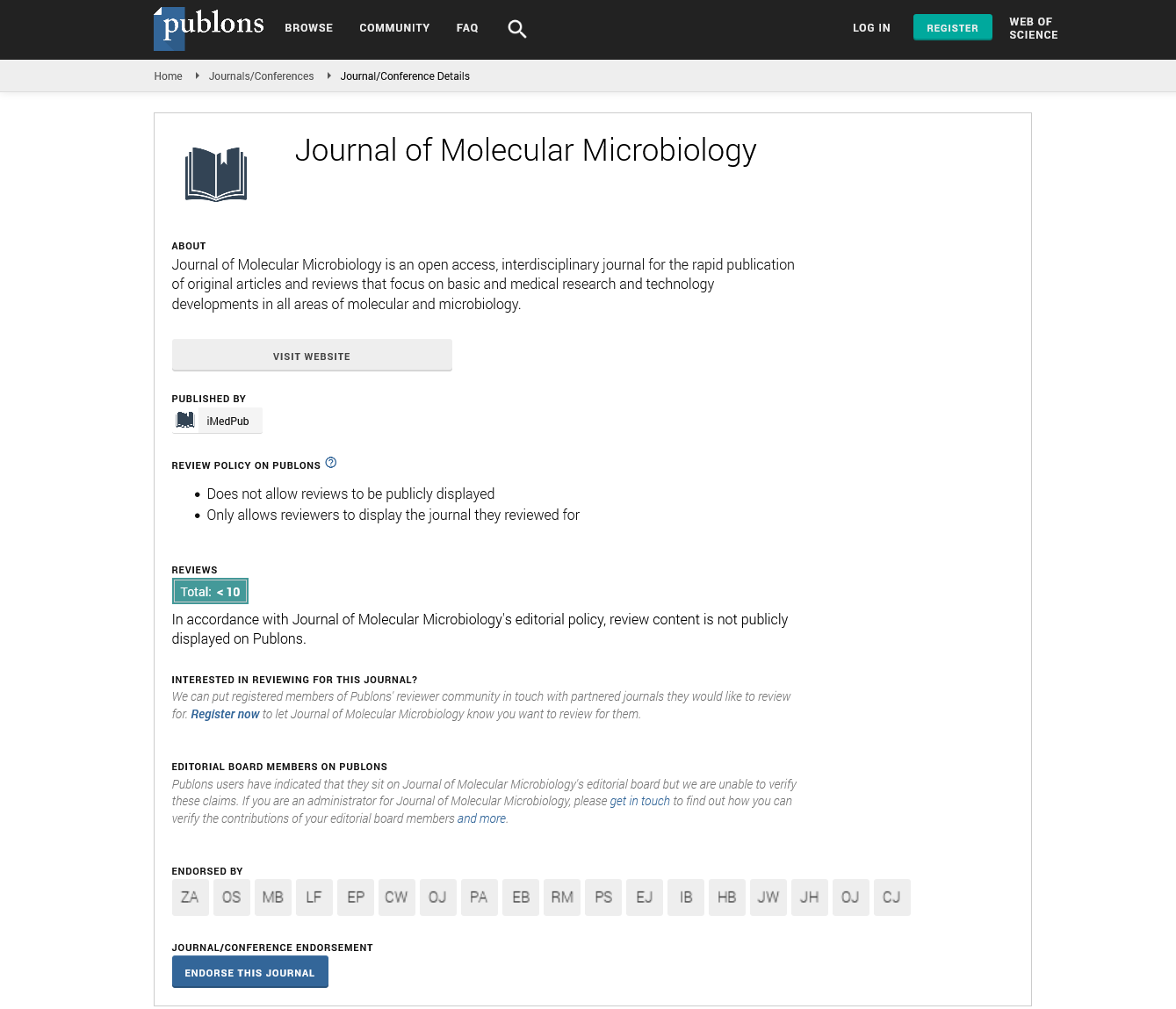Abstract
Methicillin resistant Staphylococcus aureus (MRSA) ST 398 and gut microbiota: Interspecies interactions into the mucus layer of ascendant colon
Statement of the Problem Intestinal mucus layer may provide a niche for many nosocomial pathogens, including S. aureus which can occasionally cause a Staphylococcal enterocolitis. Recent exciting researches support the notion that a healthy intestinal microbiota composition can promote resistance to invading pathogenic bacterial species. Purpose: The purpose of this study was to evaluate the survival of MRSA in simulated human ascendant colon conditions and its interaction with gut microbiota into the mucus layer. Methodology & Theoretical Orientation: The study was performed at ascendant colon environment: body-like temperature (37°C), anaerobiosis (N2 ), pH 5.7, constant slow shaking (40 RPM). Mucin agar carriers stand for the intestinal mucus layer and a basic feed medium represented the intestinal lumen contents. A three-days long in vitro study was performed by using microbiota from pooled faeces of healthy individuals that were stabilized simulating ascendant colon conditions and a MRSA strain of animal origin (ST398- t011-SCCmecV; 107 UFC/mL). Each day we checked the viability of MRSA both into the mucin agar carriers and in the feed medium by using MRSA-SELECT® plates (BioRad). The results were confirmed by quantitative PCR. Findings: MRSA population decreased as a function of time during the incubation with luminal colon microbiota where it was not viable after 24 h. Counts of 4 log cfu/g were still obtained in the mucin agar carriers after 72 h of incubation. On the other hand, counts of Bifidobacterium and Akkermansia increased in the mucin agar carriers as a function of time. Conclusion & Significance: The results support the hypothesis that a competitive microbiota may control MRSA intestinal colonization empathize the important role of specific groups which can inhibit the adhesion of/displace MRSA from the intestinal mucus layer. Recent Publications 1. Baumler A J and Sperandio V (2016) Interactions between the microbiota and pathogenic bacteria in the gut. Nature 535(7610):85-93. 2. Barroso E, Cueva C, Pelaez C, Martínez-Cuesta M and Requena T (2015) Development of human colonic microbiota in the computer-controlled dynamic SIMulator of the GastroIntestinal tract SIMGI. LWT-Food Science Technology 61(2):283-289 3. Jakobsson H E, Rodríguez-Piñeiro A M, Schütte A, Ermun A, Boysen P, Bemark M, Somme F, Bäckhed F, Hansson GC and Johansson MAV (2014) The composition of the gut microbiota shapes the colon mucus barrier. EMBO report 16(2):164-177 4. Gries D M, Pultz N J and Donskey C J (2005) Growth in cecal mucus facilitates colonization of the mouse intestinal tract by methicillin resistant Staphylococcus aureus. Journal of Infectious Diseases 192(9):1621- 1627. 5. Vesterlund S, Karp M, Salminen S and Ouwehand A C (2005) Staphylococcus aureus adheres to human intestinal mucus but can be displaced by certain lactic acid bacteria. Microbiology. 152:1819-1826. Biography: Elisa Spinelli is a Veterinarian with a Postgraduate qualification in Food safety, Certification and Food Risk Communication. She is a PhD student at University of Foggia (Italy) where she is working on the main topic of antimicrobial resistant bacteria from a food safety perspective, focusing on the detection and prevalence of Methicillin resistant Staphylococcus aureus (MRSA) in new ecological niches. She has worked over the last six months as a Visiting PhD student at The Research Institute of Food Science (CIAL-CSIC), Madrid (Spain) on the fate of MRSA along the human gastrointestinal tract and its interaction with gut microbiota.
Author(s): Elisa Spinelli1, Marta Caruso2, Matera Antonio Parisi2, Carmen Pelàez3, Carmen Martínez-Cuesta3, Alessandra Barlaam1 , Giovanni Normanno1 and Teresa Requena3
Abstract | PDF
Share This Article
Google Scholar citation report
Citations : 86
Journal of Molecular Microbiology received 86 citations as per Google Scholar report
Journal of Molecular Microbiology peer review process verified at publons
Abstracted/Indexed in
- Google Scholar
- Publons
Open Access Journals
- Aquaculture & Veterinary Science
- Chemistry & Chemical Sciences
- Clinical Sciences
- Engineering
- General Science
- Genetics & Molecular Biology
- Health Care & Nursing
- Immunology & Microbiology
- Materials Science
- Mathematics & Physics
- Medical Sciences
- Neurology & Psychiatry
- Oncology & Cancer Science
- Pharmaceutical Sciences
